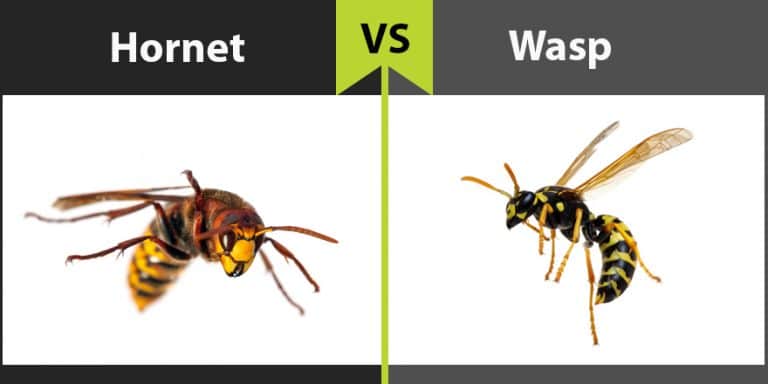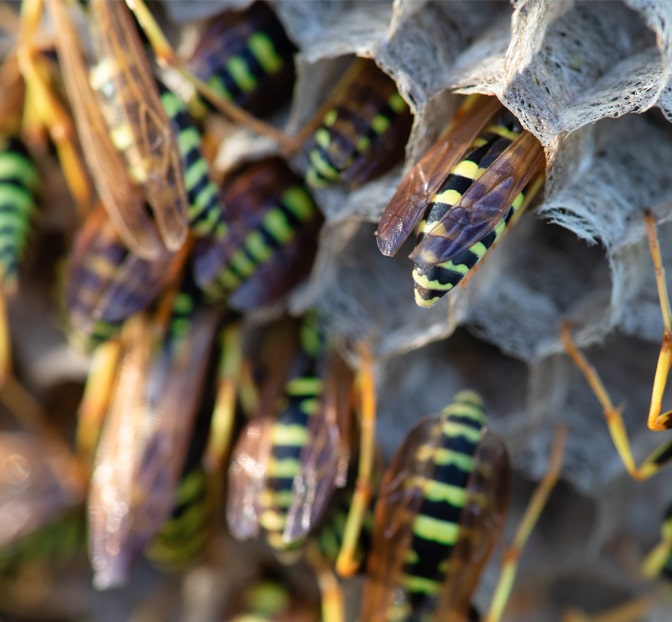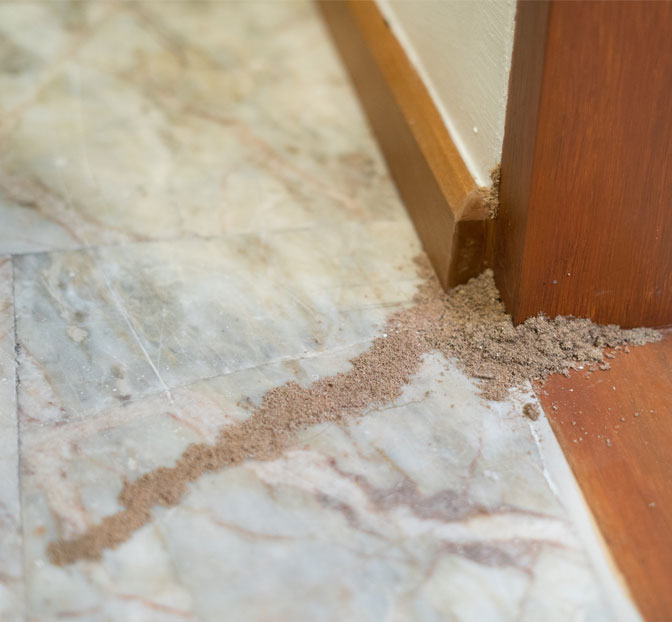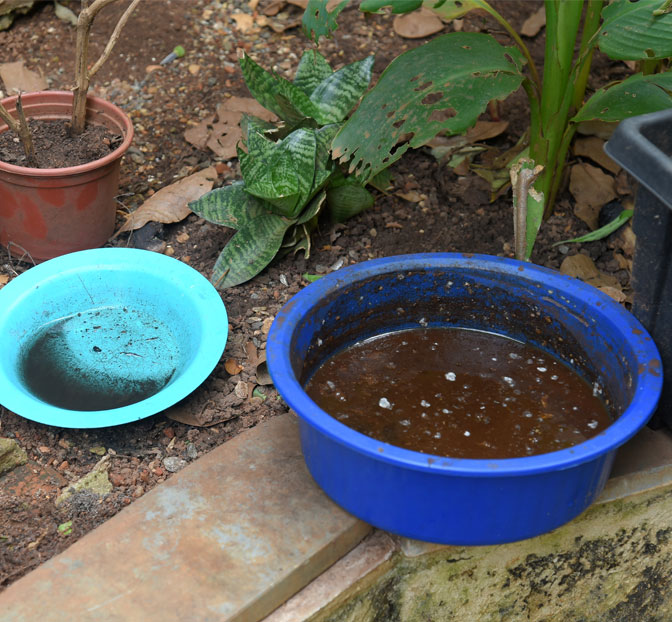The 6 Warning Signs for Wasp Infestations
How do you know if you have a wasp problem? If you are seeing a few wasps flying around outside or a lot of them, is that a wasp infestation? Below, you will find the answers in this complete guide which explains 6 major signs of wasp infestations in and around your home.
In addition, this guide will share warnings and important information about how to get rid of wasps. For your own safety, we DO NOT recommend attempting to deal with your wasp problem.

What You Need to Know About Wasp Infestations
-
1. The Wasp Population Outside Has IncreasedWhen the weather warms up, you will notice more and more wasp activity outside. They may have nests nearby, under the eaves of buildings, roof tiles, woodpiles, in the ground, or nearby plants (depending on the type of wasp). Most wasps have slender yellow and black bodies that taper in at the waist and skinny wings. Wasps are always looking for a place to create a new hive. They may already be building nests, so if you see them buzzing around, you need to be proactive. Professional pest control companies can treat the exterior of your home for wasps before they take over your property.
-
2. What If You Find Wasps Inside Your Home?Sometimes random wasps can get into your home through an open door or window. But if you are finding wasps on a regular basis in your home, they may have a nest in the attic, walls, or crawl spaces of your house. You should call a professional pest control company right away. Wasps will become aggressive if they think you are threatening their nest. Therefore, it can be dangerous for you to try and exterminate them yourself. They can and will attack in full force before you can get away.
-
3. Chewed Wood Around Your HomeSome wasps like to make nests out of wood. If you have a wood-sided home, they might chew that. They will chew on sticks, logs, trees, wood fence posts, and many other things. The size of the nest will determine how much damage there is to nearby wooden structures. Sometimes it can be very extensive damage. The wasps will keep chipping away at the wood and they won’t stop until the wasp infestation is treated. There are many other insects and animals that can chew wood too like rats and termites. Therefore, it’s best to have a professional pest control company inspect the damage as soon as possible.
-
4. Wasp ActivityWasp nest building usually happens in spring. During the cold winter season, wasps go into a state of suspended animation. But they wake up and get to work building new homes when it’s warm enough. Also, some wasps build their nest out of mud. You may see wasps flying back and forth to a specific spot, such as under the eaves of your roof, and building mud nests.
-
5. What Type of Wasp Nest Should You Look For?What a wasp nest looks like will depend on the type of wasp you’re dealing with. With the most common types of wasps, this is what to look for:
○ Nests often look like balls made of paper ○ Finished nests can be the size of a basketball. They will have a hole in the bottom for the wasps to go in and out. ○ If they have just started building the nest, it will have hexagonal patterns. ○ Mud nests will look like vases made of clay stuck to a wall. ○ Some types of wasps build nests underground. You may not notice them until you accidentally step on them and they come swarming out to attack you. -
6. Wasp Infestations Lead to the Same PlaceThe most obvious giveaway is finding a wasp nest with wasps coming and going. But they may have the nest hidden inside of something like a wall, birdhouse, woodpile, old parked cars, and many other creatively hidden places. If you spot them coming and going to a specific point of entry, you know they have a nest. Remember, though: do not anger the wasps in “their” home territory.
What is the Difference Between a Wasp and Hornet?
Color and size is the main difference between hornets and wasps.
- Hornets are bigger than wasps with black and white rings.
- Wasps are about ⅓ -1 inch long and have black and yellow rings

What About Murder Hornets (Asian Giant Hornet)?
Nicknamed “Murder hornets,” the Asian giant hornet is the largest known hornet in the world. Normally they are found in Asian countries such as Japan and China. But as recently as 2019, there were sightings of them in British Columbia and Washington state. Entomologists in these areas feel they have eradicated all nests as of 2021 and are waiting to see if any more nests are found in 2022.
The Asian giant hornet like to live in mountains and low forests areas, typically climates that are mild and rainy. They tend to stay away from the higher altitude and dry climates. These hornets build their nests in the ground or rotted trees. They mainly eat other insects and will attack and destroy bee colonies and paper wasp hives. In Japan, they have been reports of these hornets killing over 50 people when their colony is threatened by stinging people repeatedly.
Asian giant hornets have a light orange head with a brown/black striped body and are about 1 ½ – 2 inches in size with a wingspan of about 3 inches.
What to Do If You Have a Wasp Infestation?
This is a dangerous problem that you should not attempt to resolve on your own. If you try to deal with the wasp problem, it is possible to be stung multiple times. Bad news if you are allergic to wasp stings. You could have an anaphylactic shock reaction. It’s best that you leave extermination attempts to the professionals.
What Do I Do Now?
Give us a call if you’re concerned about wasps. Request a free inspection from Conquistador Pest & Termite. We can wipe out your wasp infestation immediately.







